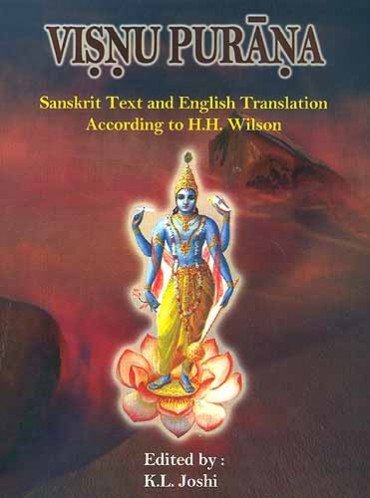The Vishnu Purana
by Horace Hayman Wilson | 1840 | 287,946 words | ISBN-10: 8171102127
The English translation of the Vishnu Purana. This is a primary sacred text of the Vaishnava branch of Hinduism. It is one of the eighteen greater Puranas, a branch of sacred Vedic literature which was first committed to writing during the first millennium of the common era. Like most of the other Puranas, this is a complete narrative from the cr...
14. The Vāmana Purāṇa
14. Vāmana Purāṇa. “That in which the four-faced Brahmā taught the three objects of existence, as subservient to the account of the greatness of Trivikrama, which treats also of the Śiva Kalpa, and which consists of ten thousand stanzas, is called the Vāmana Purāṇa[1].”
The Vāmana Purāṇa contains an account of the dwarf incarnation of Viṣṇu; but it is related by Pulastya to Nārada, and extends to but about seven thousand stanzas. Its contents can scarcely establish its claim to the character of a Purāṇa[2].
There is little or no order in the subjects which this work recapitulates, and which arise out of replies made by Pulastya to questions put abruptly and unconnectedly by Nārada. The greater part of them relate to the worship of the Liṅga; a rather strange topic for a Vaiṣṇava Purāṇa, but engrossing the principal part of the compilation. They are however subservient to the object of illustrating the sanctity of certain holy places; so that the Vāmana Purāṇa is little else than a succession of Māhātmyas. Thus in the opening almost of the work occurs the story of Dakṣa's sacrifice, the object of which is to send Śiva to Pāpamocana tīrtha at Benares, where he is released from the sin of Brahmanicide. Next conies the story of the burning of Kāmadeva, for the purpose of illustrating the holiness of a Śiva-liṅga at Kedareśvara in the Himalaya, and of Badarikāśrama. The larger part of the work consists of the Saro-māhātmya, or legendary exemplifications of the holiness of Sthāṇu tīrtha; that is, of the sanctity of various Liṅgas and certain pools at Thanesar and Kurukhet, the country north-west from Delhi. There are some stories also relating to the holiness of the Gódavarī river; but the general site of the legends is in Hindustan. In the course of these accounts we have a long narrative of the marriage of Śiva with Umā, and the birth of Kārtikeya. There are a few brief allusions to creation and the Manvantaras, but they are merely incidental; and all the five characteristics of a Purāṇa are deficient. In noticing the Svārociṣa Manvantara, towards the end of the book, the elevation of Bali as monarch of the Daityas, and his subjugation of the universe, the gods included, are described; and this leads to the narration that gives its title to the Purāṇa, the birth of Kṛṣṇa as a dwarf, for the purpose of humiliating Bali by fraud, as he was invincible by force. The story is told as usual, but the scene is laid at Kurukṣetra.
A more minute examination of this work than that which has been given to it might perhaps discover some hint from which to conjecture its date. It is of a more tolerant character than the Purāṇas, and divides its homage between Śiva and Viṣṇu with tolerable impartiality. It is not connected, therefore, with any sectarial principles, and may have preceded their introduction. It has not, however, the air of any antiquity, and its compilation may have amused the leisure of some Brahman of Benares three or four centuries ago.
Footnotes and references:
[1]:

Click to view
[2]:
From the extracts from the Vāmana Pura translated by Col. Vans Kennedy, p. 293 et seq., it appears that his copy so far corresponds with mine, and the work is therefore probably the same: two copies in the Company's library also agree with mine.
